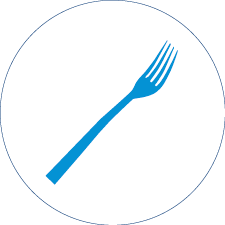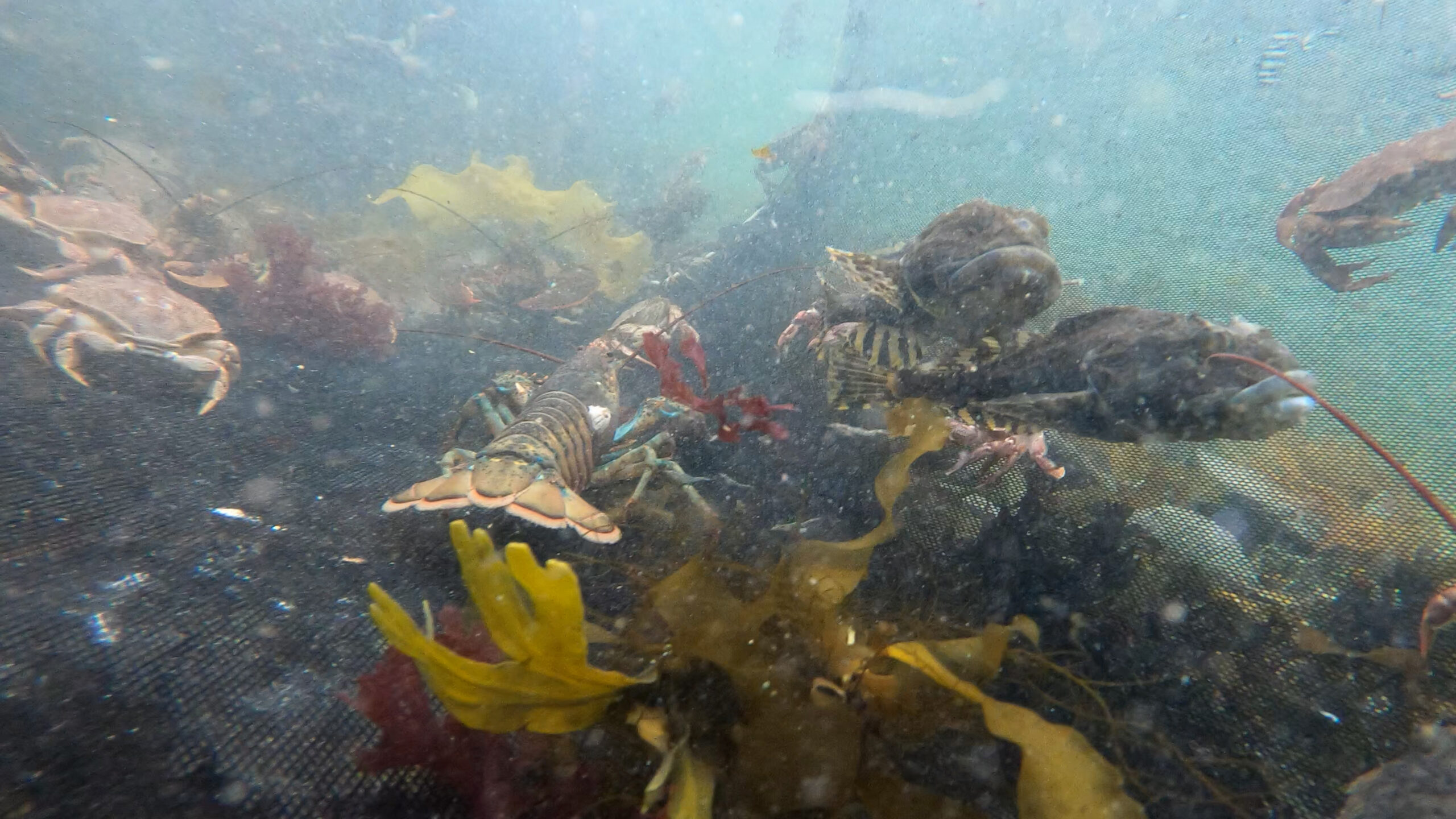
SIZE:
Approximately 15 cm.
LIFE EXPECTANCY:
Up to 20 years.
LIFE CYCLE:
Oysters change sex every year. They lay their eggs when the water reaches 20 °C. Females expel their eggs into the water, while males expel their spermatozoa. Fertilization occurs, and 24 hours later, larvae are created. They are born with their shells, and the shells continue to build them as they grow. After the eggs have been laid, the reproductive organs of oysters are at rest and shrink.
The growth period in the St. Lawrence is between May and November, with a summer pause for reproduction.
Below 4 °C, oysters hibernate and cease to nourish themselves. They continue to live, but their growth slows down.
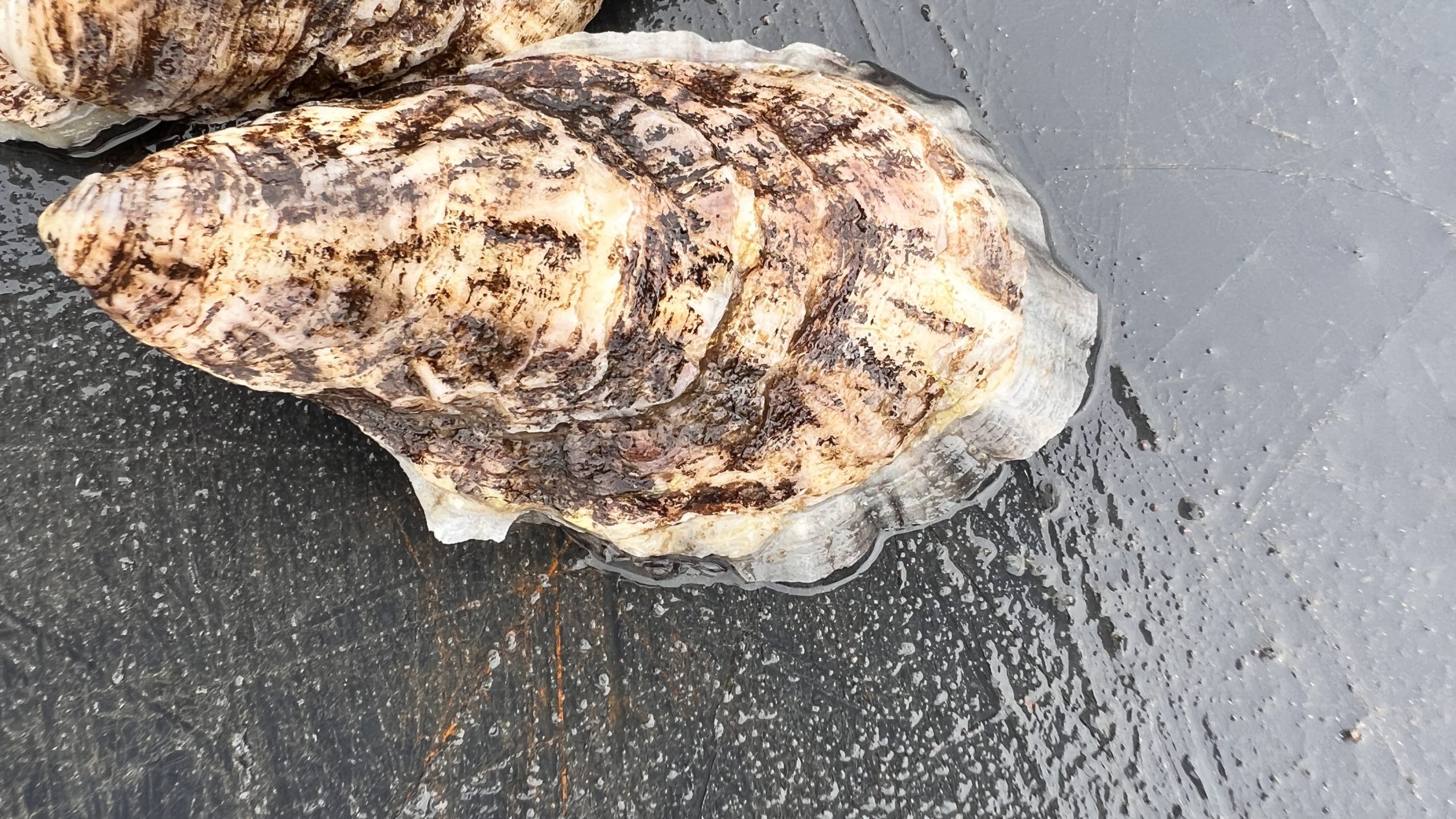
Oyster growths can correspond to sudden stress.
Credit: Exploramer, photo taken in the Magdalen Islands, 2023.
The oyster’s shell varies in size and thickness depending on environmental conditions. It is made of calcium carbonate. Its hinge, which is the point of junction of its two shells, is the oldest part of the oyster. The shell forms around this hinge as the oyster grows. The soft meat inside contains all of its organs. Its abductor muscle, which connects both shells, allows it to close tightly.
Oysters are sensitive to environmental conditions, including freshwater currents, prolonged freezing temperatures, marine plants and pollution.
Coastal zone, up to 10 m depth, in brackish or salt water.
Will stick to hard surfaces such as rocks or shells.
The American cupped oyster can withstand temperatures from −2 to 36 °C.
Oyster, from ancient Greek “ostreon”?
In ancient Greece, citizens voted to banish a person by writing their name on an “ostracon,” which was either an oyster shell or a ceramic shard, depending on the source. You have probably noticed that the words oyster and ostracize have kept this common etymological basis.
PREYS:
Plankton
PEDATORS:
Atlantic rock crabs
Sea stars
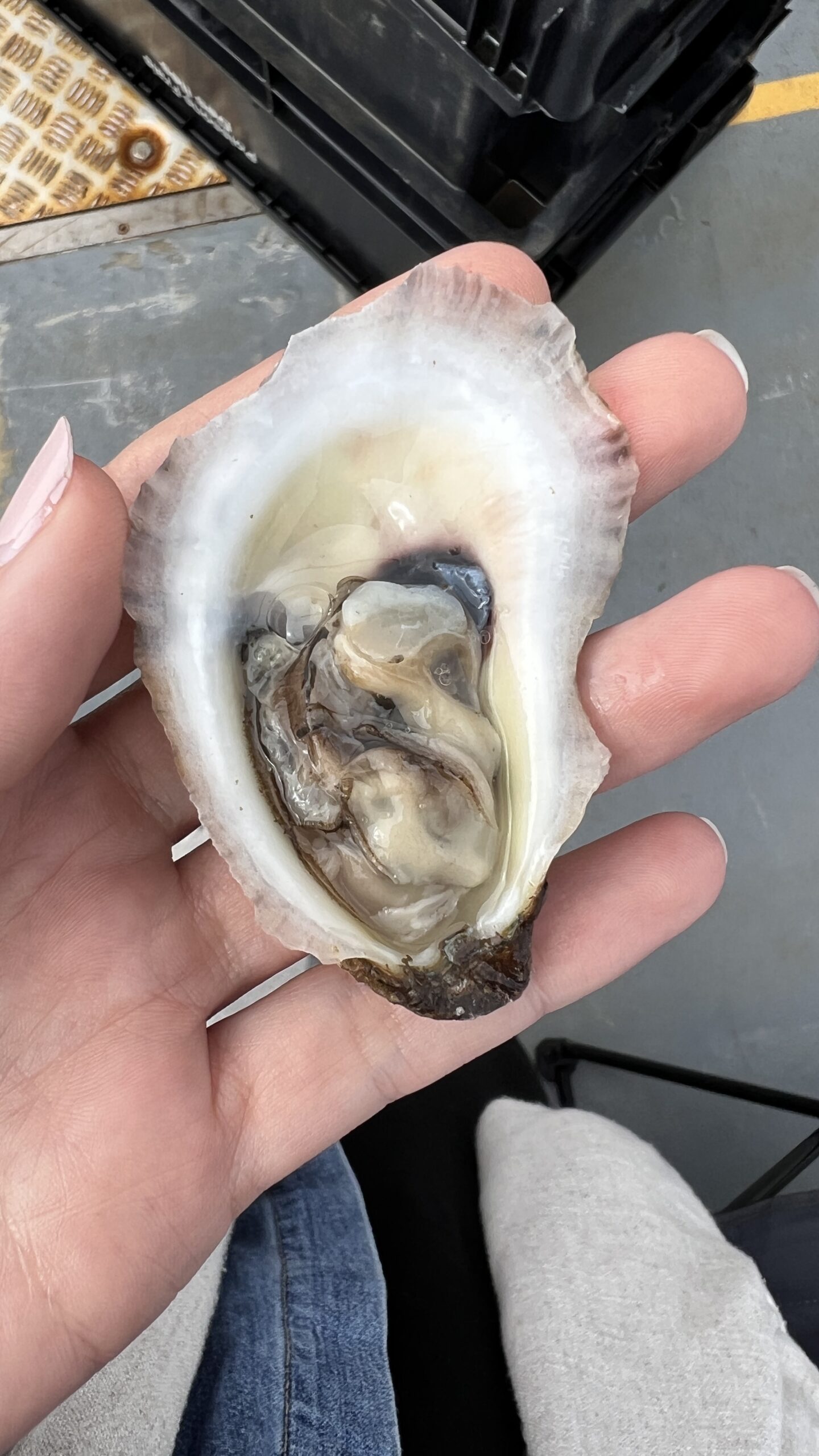
The oyster is eaten whole, including muscles and organs.
Credit: Exploramer, photo taken in the Magdalen Islands, 2023.
MACHINES:
Oyster farming or tongs and rakes for wild oyster harvesting.
REGULATIONS:
The commercial size for oysters is 76 mm, which takes four to seven years to reach.
Québec oyster farmers usually purchase oyster spats in New Brunswick or the United States. Attempts are being made for a 100% Québec production.
Oyster farming started in the 2010s. Since then, its success has surpassed that of the production of mussels.
Recreational harvesting is prohibited.
Sea stars, the “master keys”
Oyster farmers need to watch for sea stars, which are the only predators able to pass through the cages’ holes to suck up the oysters from their shells.
American cupped oyster is a Smarter seafood–listed species.
BENEFITS:
Particularly rich in zinc, which strengthens the immune system (not to mention the oyster’s aphrodisiac qualities). They are also rich in copper and vitamin B12. Oysters have few calories and are a good source of protein while also being low in fat. A piece of meat can be replaced by 12 to 15 oysters.
LET’S COOK:
Tender, salty meat. Oysters can be eaten raw with lemon, for example, or cooked, either au gratin, steamed or in a soup. The only limit is your creativity.
OUR CULINARY ADVICE:
- If purchasing live oysters, tap on the shells to check if they are good to be consumed. They should close up again.
- Keep the oysters flat in the refrigerator and covered with a moist towel. As long as they are kept in their liquid and under these conditions, they should keep for several days.
- Once open, discard the water and wait a few minutes before removing the top shell. The oysters will produce an even more flavourful liquid.
- Serve on a bed of coarse salt or seaweed rather than on ice.
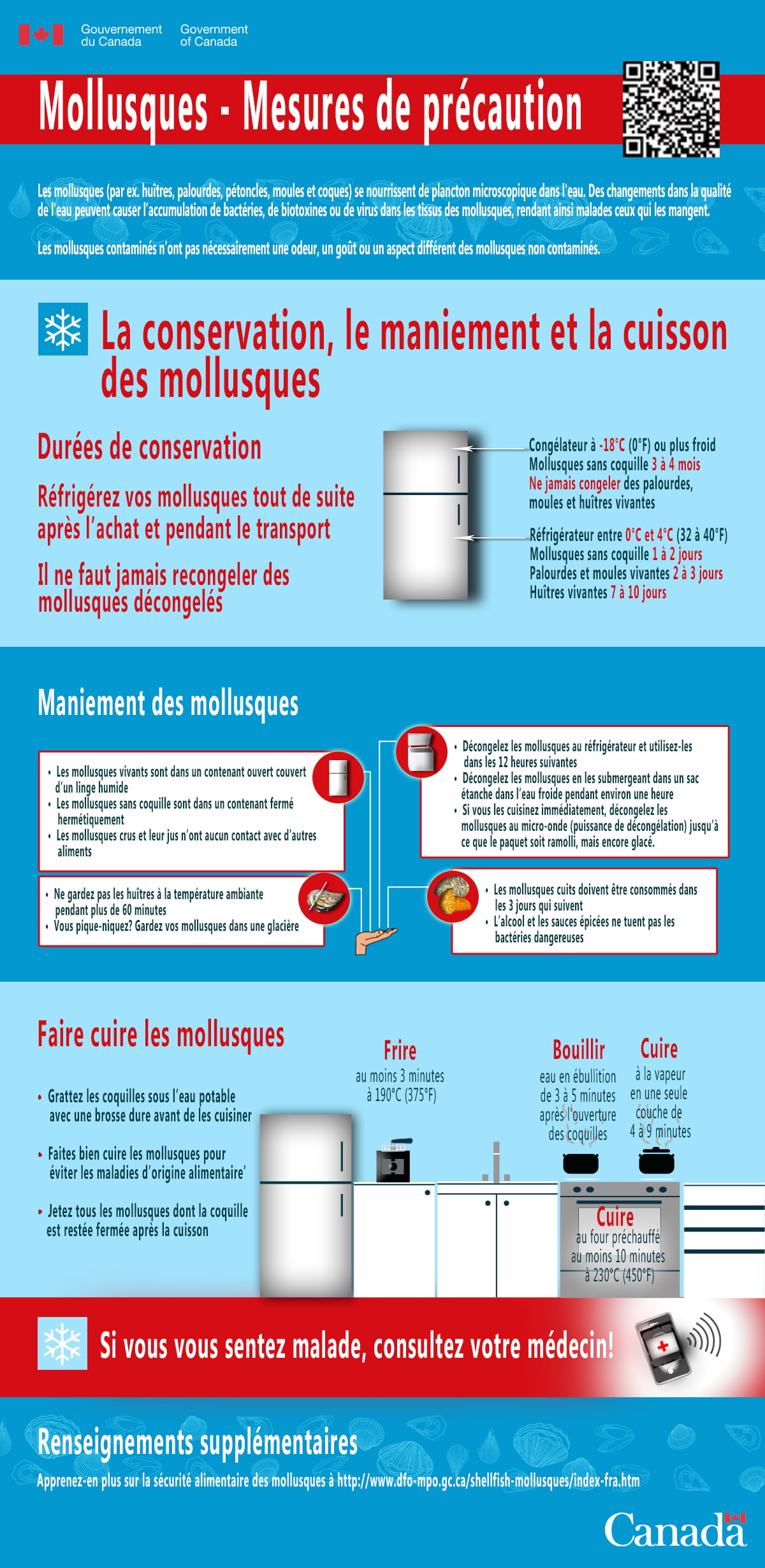
To avoid poisoning, it is important to always follow safe shellfish storage, handling and cooking practices.
Source: DFO

